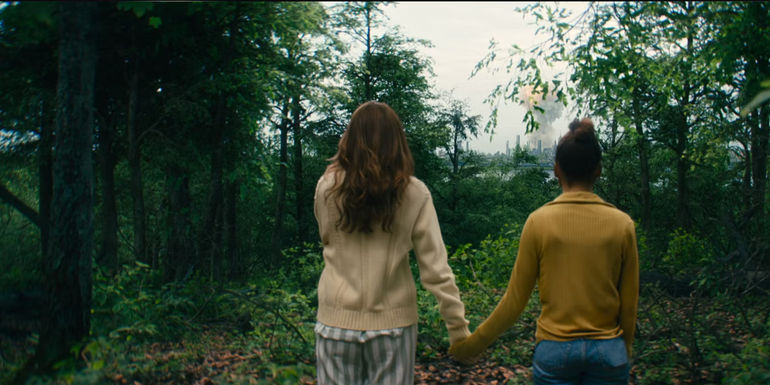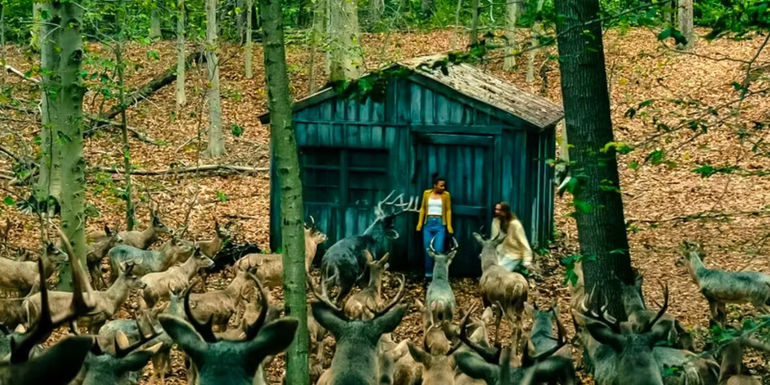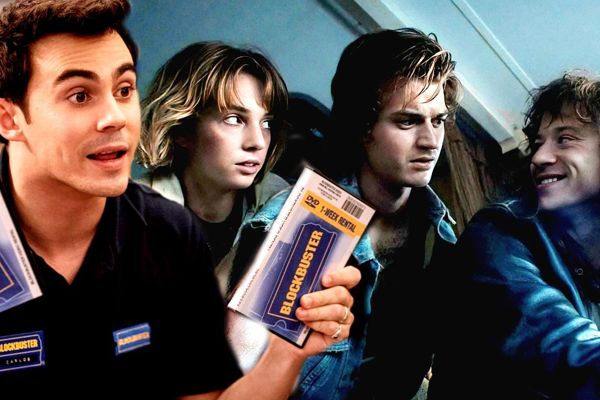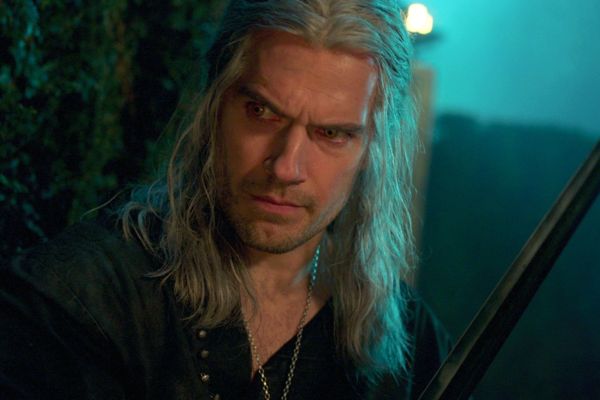
Leave The World Behind: Exploring the Polarizing Ending

A deep dive into the divisive ending of the Netflix film 'Leave the World Behind' and the director's candid commentary on it.
The Controversial Ending
The ending of 'Leave the World Behind' has sparked debate and divided opinions among viewers and critics alike. Director Sam Esmail's adaptation of Rumaan Alam's novel takes audiences on a tumultuous journey that culminates in an ambiguous and thought-provoking conclusion. The film, featuring a stellar cast including Ethan Hawke, Julia Roberts, and Mahershala Ali, leaves audiences grappling with unanswered questions and lingering uncertainty. This bold approach to storytelling has elicited both praise and criticism, making the film's ending a topic of intense discussion.
Leave the World Behind Ruth Myhala and Amanda Julia Roberts Hold Hands
In a recent interview with The Hollywood Reporter, Esmail candidly addresses the polarizing nature of the film's ending. He explains his deliberate choice to defy the conventions of traditional disaster films, emphasizing the importance of provoking conversation and critical thinking. Esmail's vision for the film extends beyond providing a neat resolution, aiming to leave audiences with a lasting impact that sparks contemplation and discourse.
Myha'la, Mahershala Ali, Ethan Hawke, and Julia Robert looking worried as they stand in front of a TV screen in Leave the World Behind.
Analyzing the Audience Response
The audience response to 'Leave the World Behind' has been a fascinating study in the impact of ambiguous endings on viewer satisfaction. While critics have generally lauded Esmail's bold storytelling and the film's thematic exploration, the audience reception tells a different story. The Rotten Tomatoes scores reflect a stark contrast, with a 75% critics score juxtaposed against a modest 34% audience score. The disparity in ratings underscores the divisive nature of the film's ending and its influence on viewer perception.
The White Lion cargo ship speeds towards the beach in Leave the World Behind
One of the key factors contributing to the audience's dissatisfaction is the film's enigmatic conclusion, which leaves many questions unanswered. The lack of closure and the portrayal of flawed characters have been cited as sources of frustration for some viewers. Additionally, the film's focus on the impact of cataclysmic events on the dynamics of the central family, rather than providing clear explanations, has proven to be a polarizing choice. This departure from traditional disaster film tropes has sparked debate about the purpose and effectiveness of ambiguous endings in storytelling.
Farrah Mackenzie as Rose Sandford gazing at a massive DVD collection the doomsday bunker in Leave the World Behind
The Art of Ambiguity
The ambiguity of 'Leave the World Behind' serves as a deliberate narrative choice that challenges conventional storytelling norms. Instead of neatly tying up loose ends, the film delves into the complexities of human relationships, the fragility of technological systems, and the profound impact of societal upheaval. By leaving certain aspects open to interpretation, Esmail invites audiences to engage in introspection and critical analysis.
Ruth (Myha'la) and Amanda (Julia Roberts) face off with the deer in Leave the World Behind
The film's departure from the formulaic resolution of disaster films is a conscious effort to stimulate discourse and provoke contemplation. Esmail's emphasis on creating a lasting and thought-provoking cinematic experience underscores his commitment to pushing the boundaries of storytelling. While the divisive nature of the ending has sparked passionate debates, it also highlights the power of cinema to challenge and inspire, evoking diverse responses and interpretations from audiences.
Julia Roberts inspecting Teslas in Leave the World Behind



















